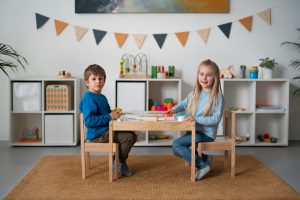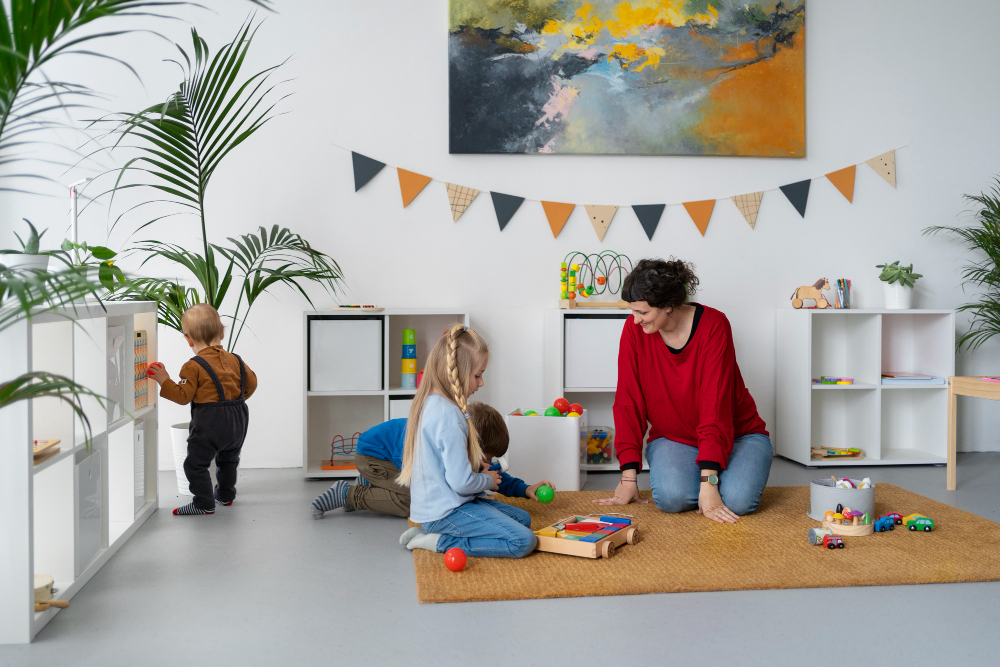Deprecated: Creation of dynamic property ILJ\Core\LinkBuilder::$multi_keyword_mode is deprecated in /home/c2041299c/public_html/wp-content/plugins/internal-links/core/linkbuilder.php on line 82
Deprecated: Creation of dynamic property ILJ\Core\LinkBuilder::$links_per_page is deprecated in /home/c2041299c/public_html/wp-content/plugins/internal-links/core/linkbuilder.php on line 83
Deprecated: Creation of dynamic property ILJ\Core\LinkBuilder::$links_per_target is deprecated in /home/c2041299c/public_html/wp-content/plugins/internal-links/core/linkbuilder.php on line 84
Creating a Montessori at home environment can be a great way to help your child learn and grow. The Montessori method is based on the idea that children learn best when they are free to explore and interact with their environment. It emphasizes independence, self-discipline, and a love of learning. By creating a Montessori environment at home, you can help your child develop these important skills and prepare them for success in school and in life. In this blog post, we will discuss the steps you can take to create a Montessori environment at home.
Step 1: Understand the Montessori Method
Before you can create a Montessori at home environment, it is important to understand the Montessori method. The Montessori method was developed by Dr. Maria Montessori in the early 1900s. It is based on the idea that children learn best through exploration and discovery. The Montessori method emphasizes independence, self-discipline, and a love of learning.
One of the key principles of the Montessori method is the idea that children should be free to explore and interact with their environment. Montessori classrooms are designed to be child-centered, with materials and activities that are tailored to the child’s interests and abilities. The teacher’s role is to guide the child’s learning, rather than direct it.
Step 2: Create a Safe and Inviting Environment
The first step in creating a Montessori environment at home is to create a safe and inviting space for your child to learn and explore. This space should be child-friendly, with furniture and materials that are appropriately sized for your child. It should be well-lit, with plenty of natural light if possible.
The Montessori environment should be free of clutter and distractions. This will help your child focus on their activities and promote a sense of calm and order. Make sure there is plenty of open space for your child to move around and explore.
Step 3: Use Child-Sized Furniture and Materials
Another important element of the Montessori environment is the use of child-sized furniture and materials. This helps to promote independence and self-discipline. Your child should be able to access their materials and activities without assistance.
For example, you can use child-sized tables and chairs, low shelves for storing materials, and child-sized kitchen tools. You can also provide child-sized cleaning tools, such as a small broom and dustpan, to encourage your child to take responsibility for their environment.

Step 4: Provide Developmentally Appropriate Activities and Materials
The Montessori at home environment should be filled with activities and materials that are developmentally appropriate for your child. These materials should be designed to help your child develop their fine motor skills, hand-eye coordination, and problem-solving abilities.
Montessori materials are often made of natural materials, such as wood, metal, and fabric. They are designed to be simple and uncluttered, with a focus on the task at hand. Examples of Montessori materials include puzzles, stacking toys, and sensory bins.
Step 5: Encourage Independence and Self-Discipline
One of the key goals of the Montessori method is to promote independence and self-discipline. You can encourage these qualities at home by giving your child opportunities to make choices and take responsibility for their environment.
For example, you can encourage your child to help with household tasks, such as cooking, cleaning, and laundry. You can also give your child the freedom to choose their activities and materials, within the limits of what is safe and appropriate.
Step 6: Foster a Love of Learning
Finally, the Montessori at home environment should foster a love of learning. Learning should be fun and engaging, with activities and materials that capture your child’s interest and imagination.
You can foster a love of learning by providing a variety of materials and activities that match your child’s interests and abilities. For example, if your child is interested in animals, you can provide books about animals, animal puzzles, and animal figurines for them to explore.
Another way to foster a love of learning is to allow your child to learn at their own pace. The Montessori method emphasizes self-directed learning, which means that your child can explore and learn at their own pace, without feeling rushed or pressured.
Step 7: Create a Rhythm and Routine
Creating a rhythm and routine in your child’s daily life can help to promote a sense of order and calm. This can include regular meal times, nap times, and bedtimes, as well as regular times for activities and play.
The Montessori method emphasizes the importance of a consistent routine, as it helps to establish a sense of security and predictability for your child. When your child knows what to expect, they are more likely to feel comfortable and confident in their environment.
Step 8: Be Patient and Flexible
Creating a Montessori environment at home can take time and effort, and it is important to be patient and flexible as you and your child adjust to this new way of learning and living. It is okay to make mistakes and try again, as this is part of the learning process.
Remember that the Montessori method is not a one-size-fits-all approach. Your child is unique, with their own interests and abilities. It is important to be flexible and adapt your approach to meet your child’s individual needs.
Creating a Montessori at home environment at home can be a wonderful way to help your child learn and grow. By understanding the Montessori method, creating a safe and inviting environment, using child-sized furniture and materials, providing developmentally appropriate activities and materials, encouraging independence and self-discipline, fostering a love of learning, creating a rhythm and routine, and being patient and flexible, you can help your child develop important skills and prepare them for success in school and in life.
